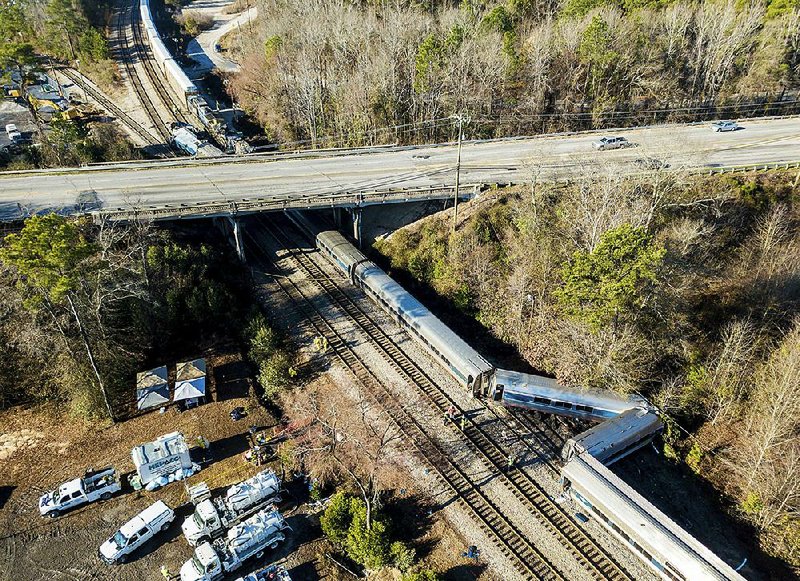CAYCE, S.C. --Railway signals were out while crews installed a safety system that could have prevented the exact type of crash that killed two people in South Carolina when an Amtrak train was diverted to a side track and slammed head-on into an empty freight train, authorities said Monday.
Automated signals that could have warned the passenger train to stop before reaching the switch sending it down the side track were turned off as workers installed a GPS-based system called positive train control, or PTC, National Transportation Safety Board Chairman Robert Sumwalt said.
A day before, Sumwalt told reporters "an operational PTC is designed to prevent this type of incident."
The crew that parked the CSX freight train on the side track and left the padlocked switch in position to divert trains from the main line were interviewed Monday, along with the dispatcher keeping up with trains in the area as the signals weren't working, Sumwalt said.
Sumwalt told reporters he had not been briefed about what the CSX workers said.
The Amtrak engineer sounded his horn seven seconds before the crash and applied emergency brakes three seconds before the train collided with the other locomotive at 50 mph, Sumwalt said, citing information from the passenger train's data recorder.
"The expectation for the Amtrak crew is that they were clear," Sumwalt said.
Two Amtrak employees, a conductor and an engineer, were killed and more than 100 passengers were treated at hospitals for injuries. It was the third fatal Amtrak train crash in less than two months.
After a collision between a commuter train and a freight train in Chatsworth, Calif., that killed 25 people, Congress in 2008 passed a law requiring railroads to adopt the technology on all tracks that carry passenger trains.
Positive train control relies on GPS, wireless radio and computers to monitor train positions and automatically slow or stop trains that are in danger of colliding, derailing due to excessive speed or about to enter track where crews are working or that is otherwise off limits.
Railroads were given seven years to start using the technology across the country's 20,000 locomotives and 60,000 miles of track. But when it became clear that few if any railroads would meet the deadline, Congress extended it another three years to Dec. 31, 2018, with the option to grant railroads that show progress an additional two years to Dec. 31, 2020. Several freight railroads have previously told the government they won't be able to meet the 2018 deadline.
Overall, freight railroads have implemented positive train control on 56 percent of required route miles, according to the Association of American Railroads. The association said it's not clear yet how many of the seven large freight railroads operating in the U.S. will require extensions.
To work, the system relies on devices on both locomotives and the tracks themselves, meaning that the companies must work together to ensure their technologies communicate properly, and shoulder their own costs independently of one another.
In some areas of the northeastern U.S., where Amtrak owns both railways and locomotives, the company has been able to successfully set up positive train control. But in areas like South Carolina, the tracks are owned by freight companies like CSX, on whom they must rely to implement that part of the technology.
"It's just a huge undertaking," said Mary Schiavo, former inspector general for the U.S. Department of Transportation. "Lives are at stake."
CSX, which operates throughout the eastern U.S., has already spent more than $1.2 billion on positive train control systems, according to congressional testimony by company executive Frank Lonegro in 2015. On its website, the company says it's also been limited by lengthy review processes needed to implement the system on 15,000 miles of track.
Schiavo said it's well past time for positive train control to become a reality for all of the country's passenger rail systems.
"People aren't focused on it until we have tragedies," Schiavo said.
Information for this article was contributed by Jeffrey Collins, Michael R. Blood, Joan Lowy and Josh Replogle of The Associated Press.
A Section on 02/06/2018

